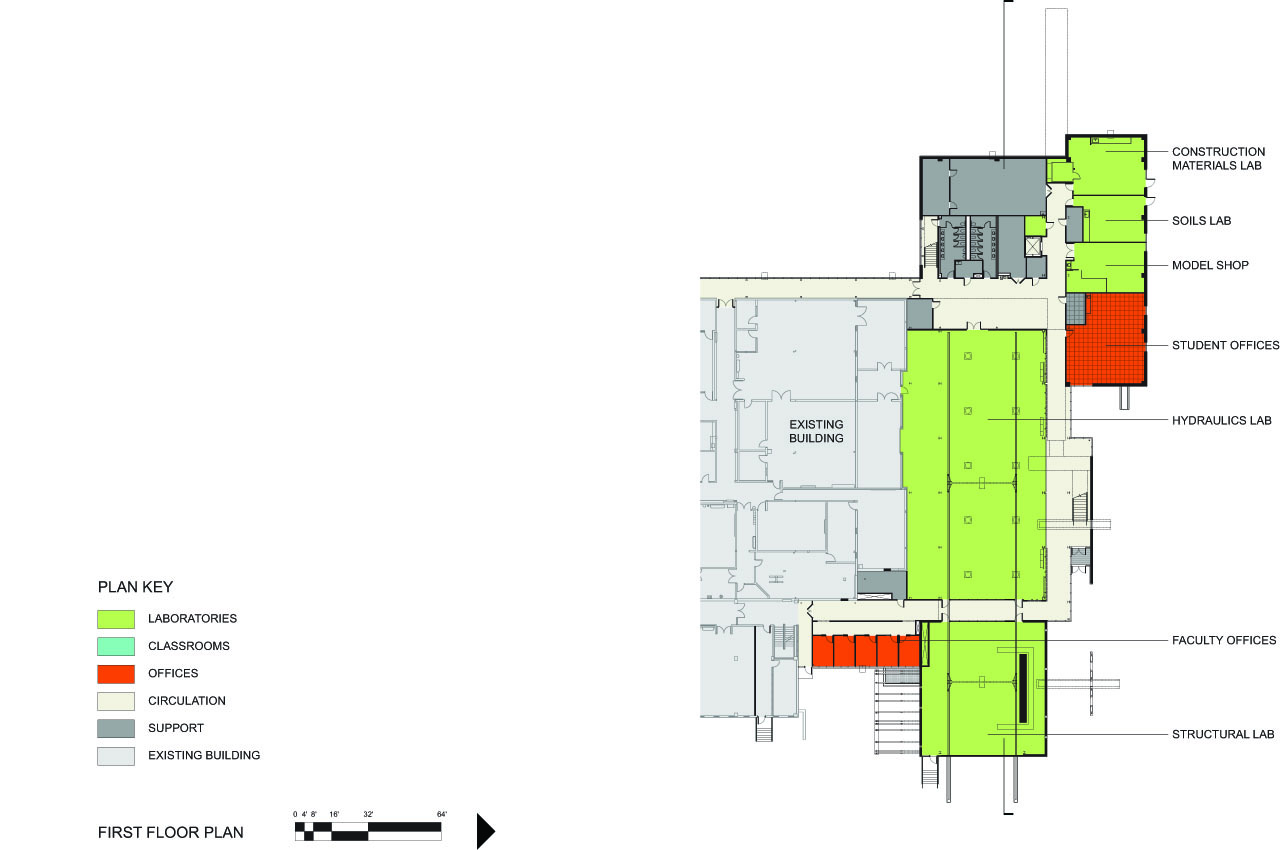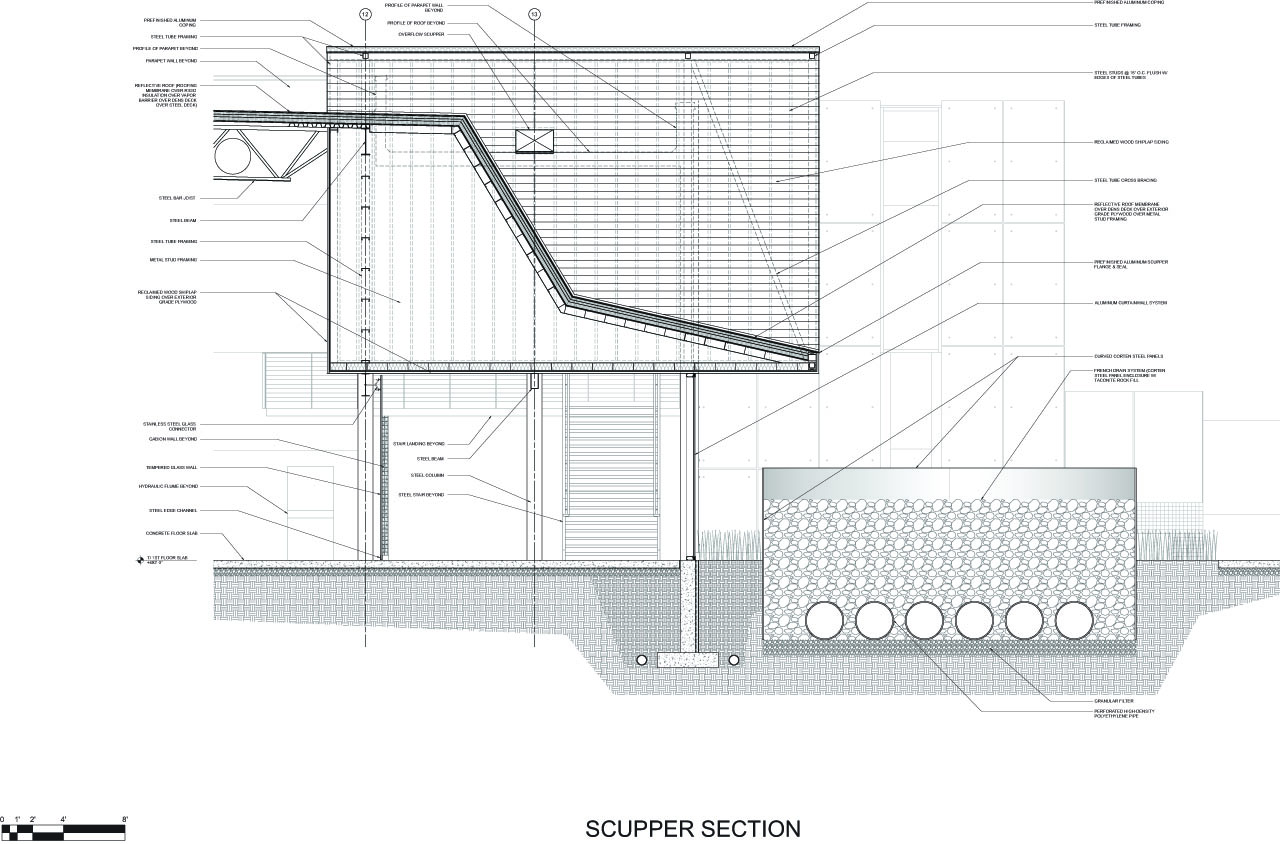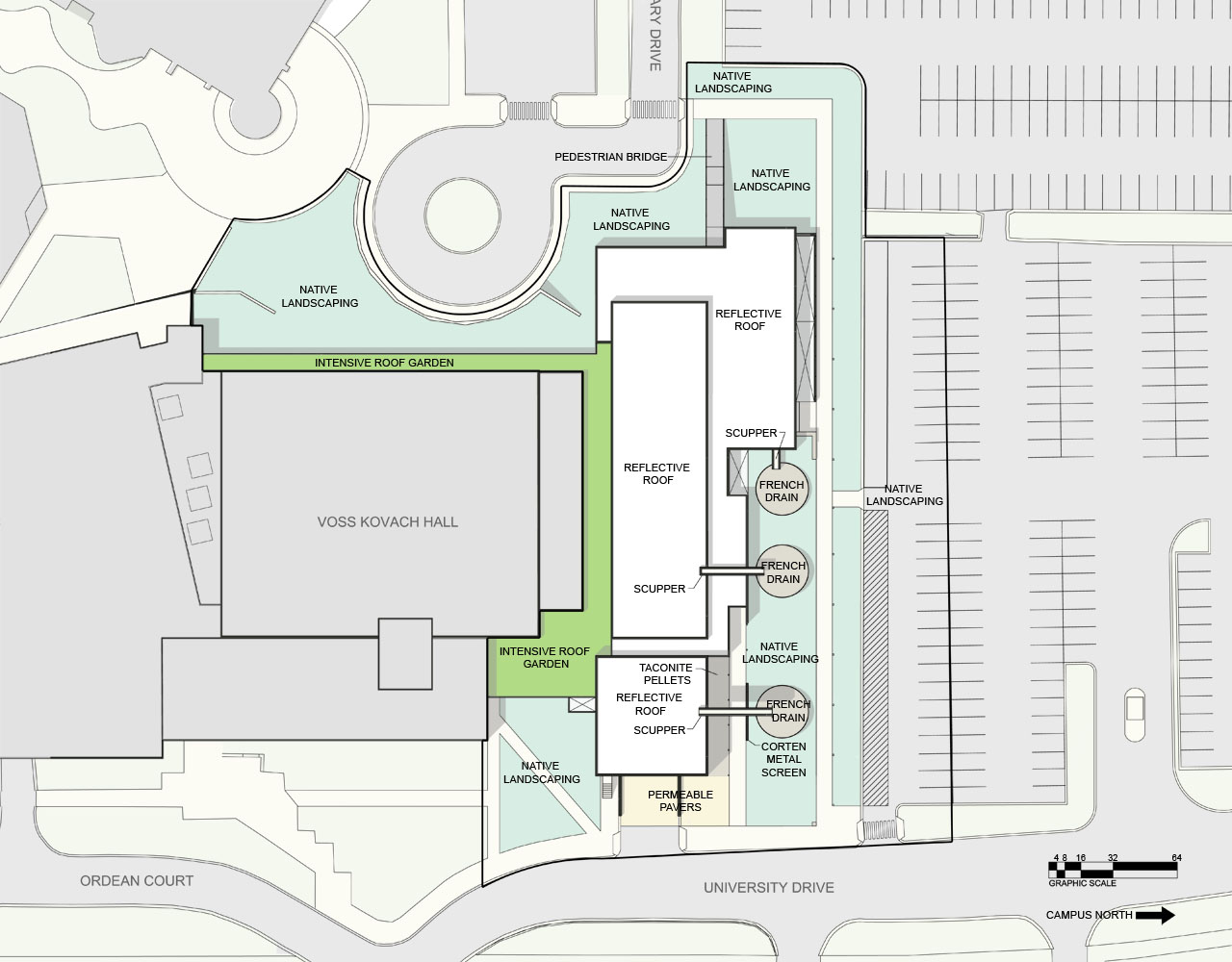Structural and mechanical systems used in the Swenson Civil Engineering Building, located on the University of Minnesota Duluth campus, serve as a teaching tool for the program’s students.
In 2008, The University of Minnesota Duluth began offering a B.S. in Civil Engineering. The new program required the construction of its own building, and Ross Barney Architects were hired to design the 35,300 sq. ft James I. Swenson Civil Engineering Building, which was completed in 2010.
 Image courtesy of Kate Joyce Studios
Image courtesy of Kate Joyce Studios
Ross Barney Architects immediately saw the potential to make the space more than just a place to hold classes about structures and materials. They fashioned the building into a learning laboratory in its own right. Using a mixed palette of materials, structural methods, and connection details, they turned the building into a demonstration piece that engineering students can learn from directly.
The building program called for two double height laboratory spaces: a structural lab and a hydraulics lab. The architects aligned these labs with one another and with an exterior loading dock, which allows the tracks of a gantry crane system to run in a straight line between the spaces. The resulting large volume became the nexus of the design; circulation spaces, computer rooms, and offices flank the labs and have clear views into them. Also influencing the building’s layout were existing exterior circulation patterns on the campus. Drawing people into the building helps to further the university’s goal of increasing visibility for the civil engineering program.
Cor-Ten® panels were installed as the building’s main cladding material, and the use of this local steel bolsters the LEED Gold project’s green credentials. A precast concrete wall system encloses the structural lab, which is located off the streetfront, and makes for a study in concrete construction. Here different shapes and sizes of precast panels interlock, separated by slit windows. Structural bracing systems along the lab’s south wall were left in place to serve as learning tools. A large bi-fold door, also clad in Cor-Ten®, offers a dramatic element for the elevation and increases the visibility of the work being done inside the lab.
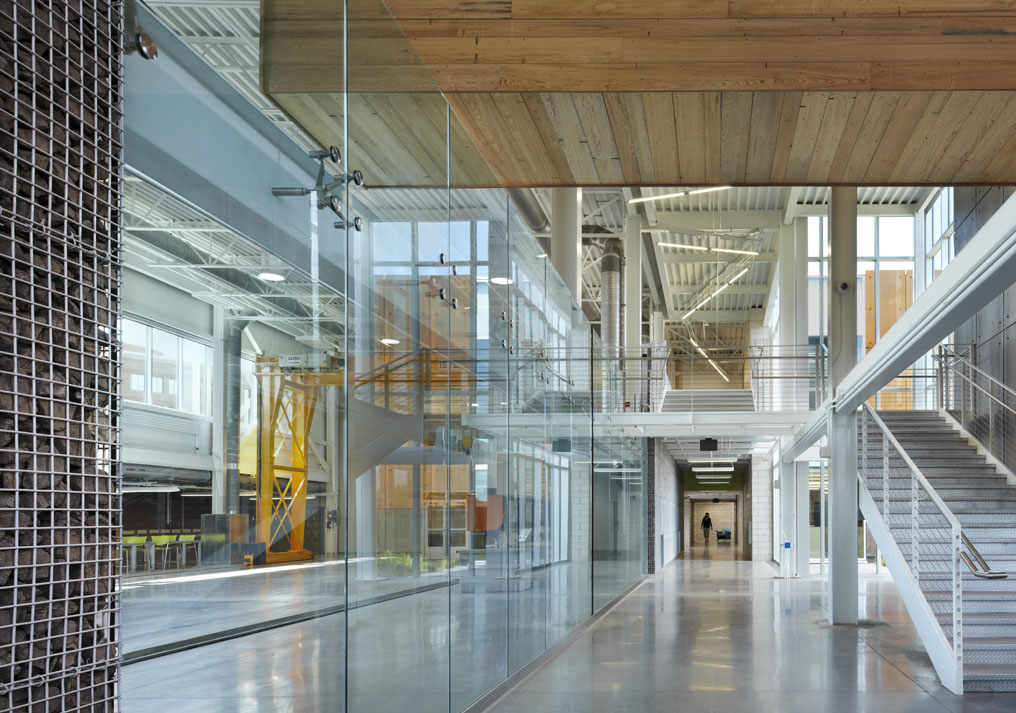
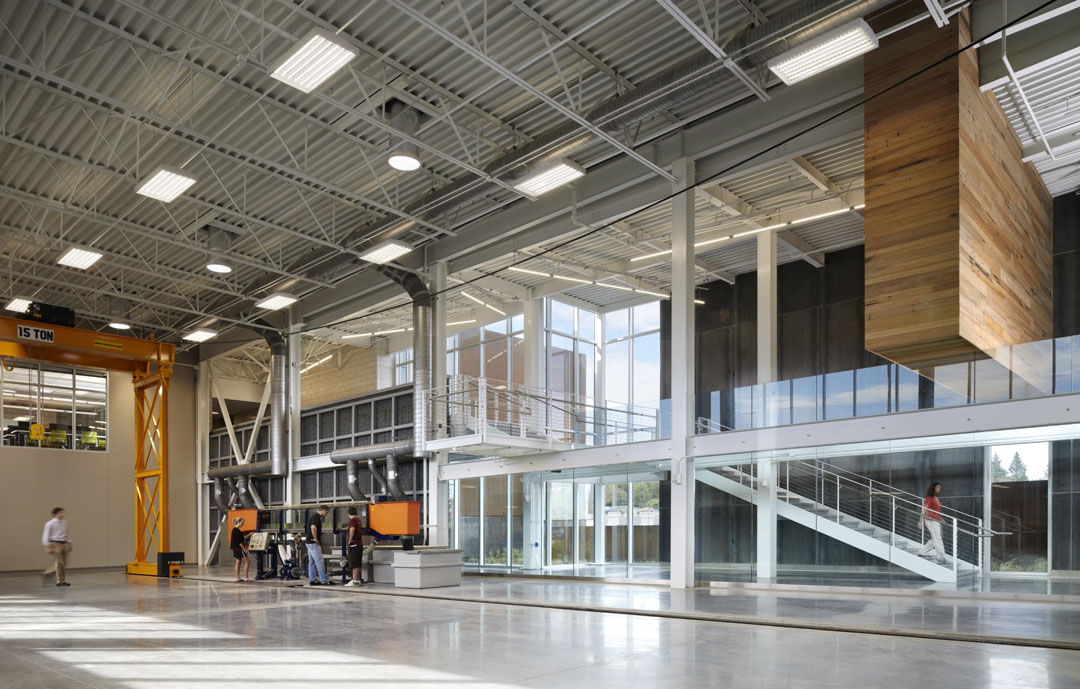
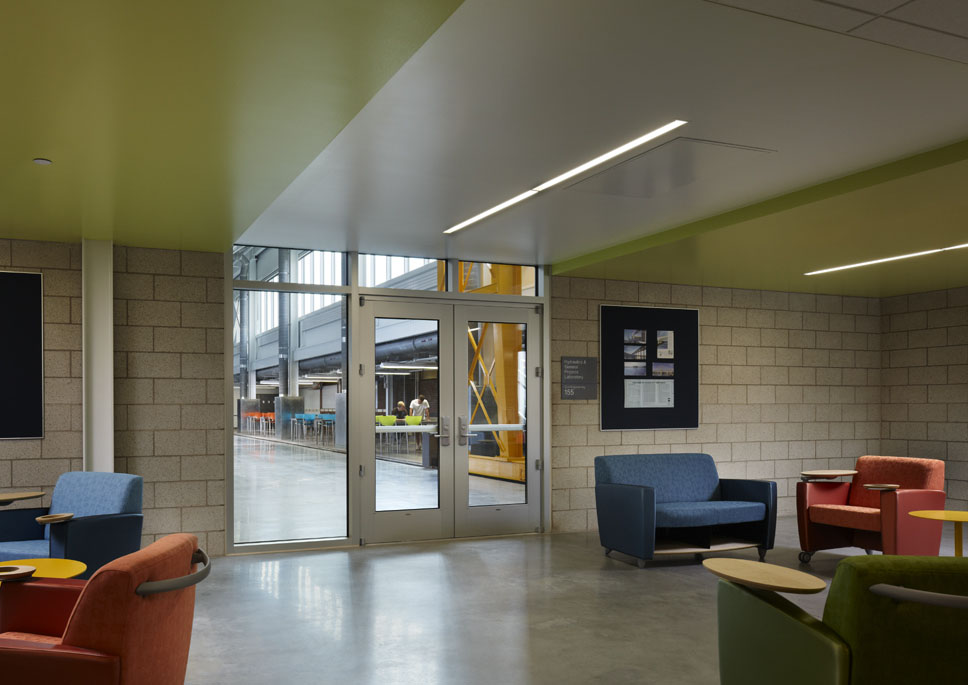
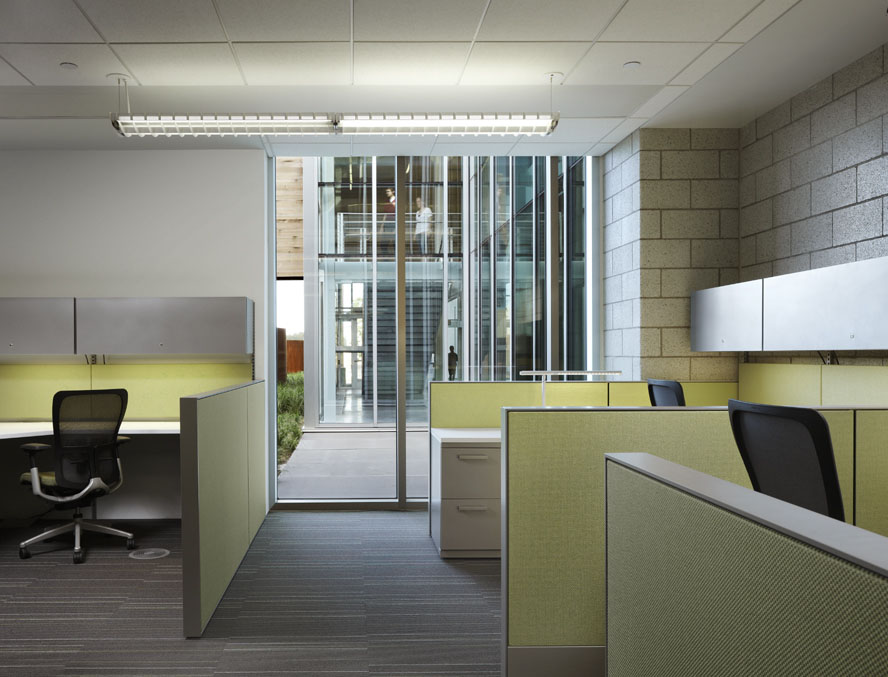
Oversized scuppers transport water to large rain barrels, also made of Cor-Ten® steel, and the water then feeds into a French drain system. Two of the three scuppers are clad in wood; the third is of poured concrete. These contrasting building materials differentiate the scuppers from the rest of the structure’s massing. The wood used was regionally sourced, having been reclaimed from old pickle barrels. The two wood-clad rooftop scuppers carry through to the building’s interior, becoming abstracted lintels that span the main corridor.
Extensive glazing was used in both the building’s exterior and interior. This aids in daylighting, as well as promoting views across the spaces. A glazed corridor connects the new civil engineering building with the existing Voss-Kovach Hall.
Through careful attention to detailing and materials, Ross Barney Architects turned the Swenson Civil Engineering building into a case study for the kind of work that students can expect to do once they are inside its walls. The architects reinforced this opportunity for learning by arranging spaces to optimize visibility and idea sharing.
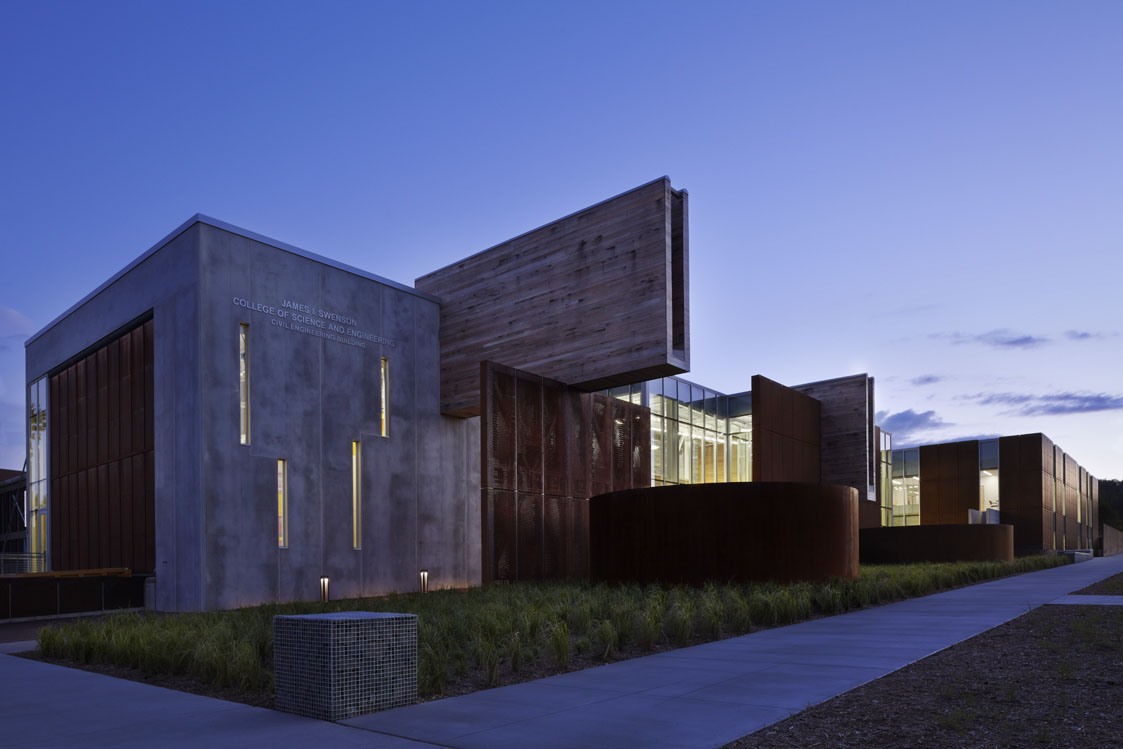

Kristin Dispenza
Kristin graduated from The Ohio State University in 1988 with a B.S. in architecture and a minor in English literature. Afterward, she moved to Seattle, Washington, and began to work as a freelance design journalist, having regular assignments with Seattle’s Daily Journal of Commerce.
After returning to Ohio in 1995, her freelance activities expanded to include writing for trade publications and websites, as well as other forms of electronic media. In 2011, Kristin became the managing editor for Buildipedia.com.
Kristin has been a features writer for Buildipedia.com since January 2010. Some of her articles include:

